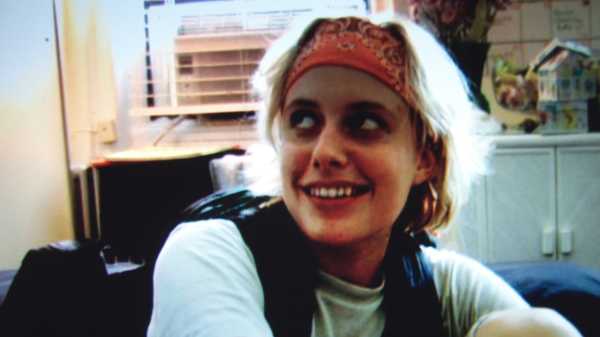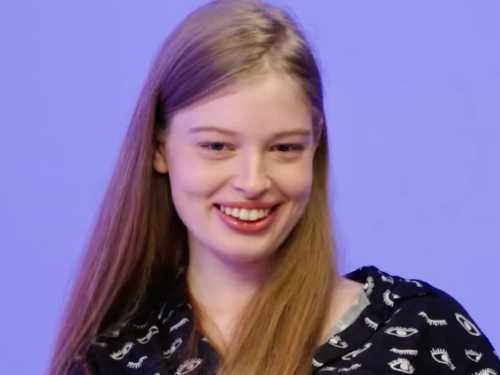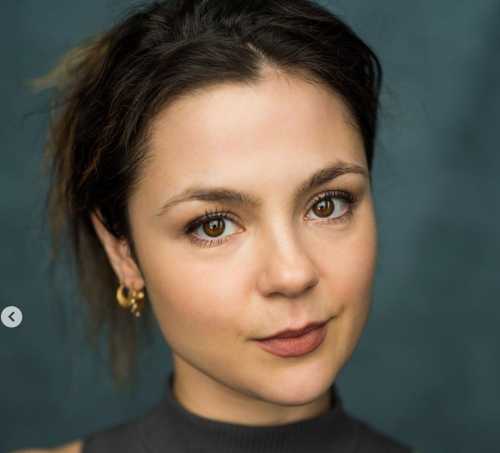
The stakes for fledgling filmmakers working on a budget of thousands feel as high to them as do those of mid-career filmmakers with multimillion-dollar budgets. The passions that do-it-yourself films embody and the conflicts that they spark are no less than those of Hollywood movies, and there’s no personnel or administrative structure around to diffuse (or defuse) them; they just carry over into the films. The better independent films are the ones where the filmmakers are aware of this permeability and build it into their working methods and their dramatic subjects.
That’s a prime definition of what mumblecore is—and that’s why it felt so bracing when it emerged, and why it’s nonetheless so off-putting to some critics. Those filmmakers didn’t just film their lives; they filmed in the manner in which they lived, and, by way of this method, they forged a self-conscious aesthetic of both melodramatic intensity and loose-ended scuffling, of fiercely alert and vulnerable invention and searching, even meandering confusion. If classic Hollywood melodrama exalts the daily problems of traditional adulthood—families and work, love and money—to grand tragedy, mumblecore does the same for the minor conflicts of young adulthood, romance and roommates and temporary or entry-level jobs, without the grandeur but also without detachment or irony.
One of the exemplary films of hard-core mumblecore, Mary Bronstein’s “Yeast,” from 2008, is all too rare (it isn’t streaming and its DVD is long out of print), and it’s getting a welcome trio of screenings at Roxy Cinema. (Bronstein will be on hand for a Q. & A. after the March 10th screening.) “Yeast” depicts an unholy trinity of frenemies: Rachel (Bronstein), a second-grade teacher who has a lease on a rumpled Brooklyn apartment; Alice (Amy Judd), her roommate, unemployed and uninvolved yet stubbornly, resolutely so; and Gen (Greta Gerwig), a free spirit with a car, who works on the margins of the art-gallery scene. The three of them have a weekend camping trip planned. (It's summertime; Rachel is on vacation, and the other two seem to be on permanent vacation.) On the morning of the trip, Alice—to Rachel’s great irritation—decides not to go, for no stated reason at all.
Rachel’s car trip with Gen turns into a misadventure of minor frustrations set off by Gen’s imperiously abrasive minor antics—in a supermarket, Gen balances a can on her head while listing products on the shelves, and, at a rest stop, Gen insists on pictures with a Burger King paper crown. Gen’s chosen campgrounds resemble a parking lot; she brings a tent that she can’t assemble; and, while the orderly Rachel carps and snipes, the only thing that brings them together is a chance encounter in the wild with a pair of snarky young men (the filmmakers Josh and Benny Safdie). The women respond to their benign aggressions with adolescent solidarity. Then, back home, Alice’s boyfriend, Tony (Sean Price Williams), mocks and insults Rachel with Alice’s backing; the undone dishes turn into a flash point of high drama, and Rachel’s prying curiosity about Alice’s new job yields revelations of a tectonic power.
The movie crams incidents and emotion into its seventy-eight-minute span with a kaleidoscopic whirl of pugnacious energy. The women live on the edge of physical confrontation—tugging, kicking, pushing, throwing things at one another—and the movie’s mercurial shifts among extremes of expression reflect the shredded edges of twentysomething lives, whether it’s Gen’s button-pushing histrionic energy, Alice’s fortress-like quiet determination, or even Rachel’s increasingly weird drive toward an idea of normalcy. Between her two unstrung friends, Rachel is the ringmaster of ritual and the avatar of order; she whips a regular Sunday-night bar jaunt into a mandate, and her insistence on the formalized sharing of a heart-to-heart conversation turns into a circus of derision and humiliation. The organized and rational Rachel is the center of the action; her manners and habits, as a schoolteacher, seem to have seeped into her social life, as she appears increasingly rigid and belittling, approaching her friends with a judgmentally passive-aggressive supervisory manner. Rachel is the eye of the storm, an eternal observer whose perspective involves, influences, and sparks the turmoil that surrounds her. Playing that lead role and central consciousness, Bronstein dramatizes her own observational passion and its under-the-surface revelations in sequences that are as pressingly active as they are tensely private.
The role of Rachel is in the image of a director: it’s impossible to teach school—or to make a movie—and remain the great anarch. Yet the organized turbulence of “Yeast” is also a family affair, both literally and metaphorically; Bronstein works with an all-star team of independent-filmmaking luminaries. The editor, who also recorded sound, is Ronald Bronstein—he and Mary are married, and he’s the director of “Frownland,” perhaps the most important independent film of the century (and a Criterion Collection release), which, with fury and craft, blasted open a new emotional space for local filmmaking. (Mary Bronstein also co-stars in it.) Among the camera operators is Josh Safdie. (He and his brother, Benny, were about to direct the feature “Daddy Longlegs,” in which Ronald stars—and he has been the Safdie brothers’ crucial collaborator ever since.) And another camera person, Williams (who also plays Tony), is one of the most inventive new cinematographers of the century. (He shot “Frownland,” many of the Safdie brothers’ films, and a batch of other major independent films.)
With this team of artistic collaborators, Mary Bronstein develops an aesthetic of frenetic urgency. The movie is filled with closeups of a cutaneous intimacy that are also roving, probing, lurching, and flat-out running; it’s a high-energy aesthetic that nonetheless catches the actors in subtle moments of graceful humor and pensive stasis. Judd, also known as Amy Judd Lieberman, is an experienced sideshow and variety performer whose theatrical vocation and artistry play slyly into the action of “Yeast.” Gerwig was at the start of her career then. She was working mainly with Joe Swanberg, who’d cast her in a supporting role in “LOL” and made her the star of his 2007 feature, “Hannah Takes the Stairs”—one of the defining films of mumblecore—and with whom she co-starred in, and co-directed, “Nights and Weekends.” (The latter film and “Yeast” both premièred at South by Southwest, in 2008.) Gerwig, whose improvisational artistry is wildly volatile yet pointedly, poetically imaginative, conjures a world in a gesture and a life in a lilting inflection; organizing and transforming the emotional space around her, she seems to be doing something like directing from within the frame. (Ronald Bronstein does something similar in “Daddy Longlegs.”)
The performances in “Yeast” are exemplary of the modern mode of acting that mumblecore inaugurated: a Heisenbergian authenticity, not anything like conventional realism but the reality of performance in the presence of a camera. The actors are both smaller than movies and bigger than life, and it’s why—despite the vituperation of critics whose paragons of performance are Method-rooted naturalism—the movement definitively changed the art and the business of American filmmaking, as key actors, starting with Gerwig, have moved to the heart of the industry, and others have reflected their influence. “Yeast” is, to my mind, a modern classic. Mary Bronstein hasn’t made another feature to date. ♦
Sourse: newyorker.com






